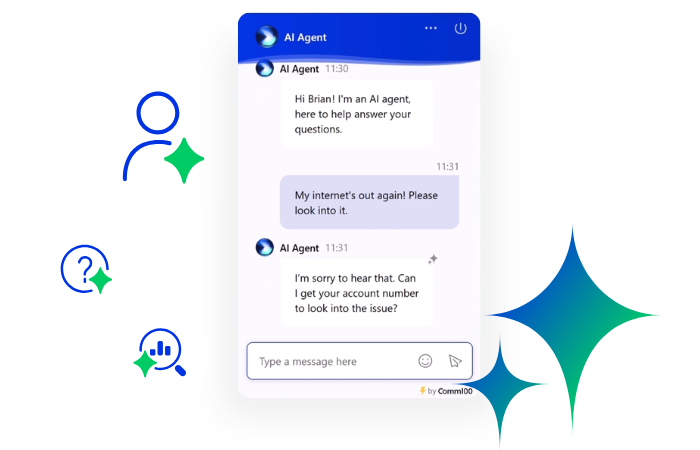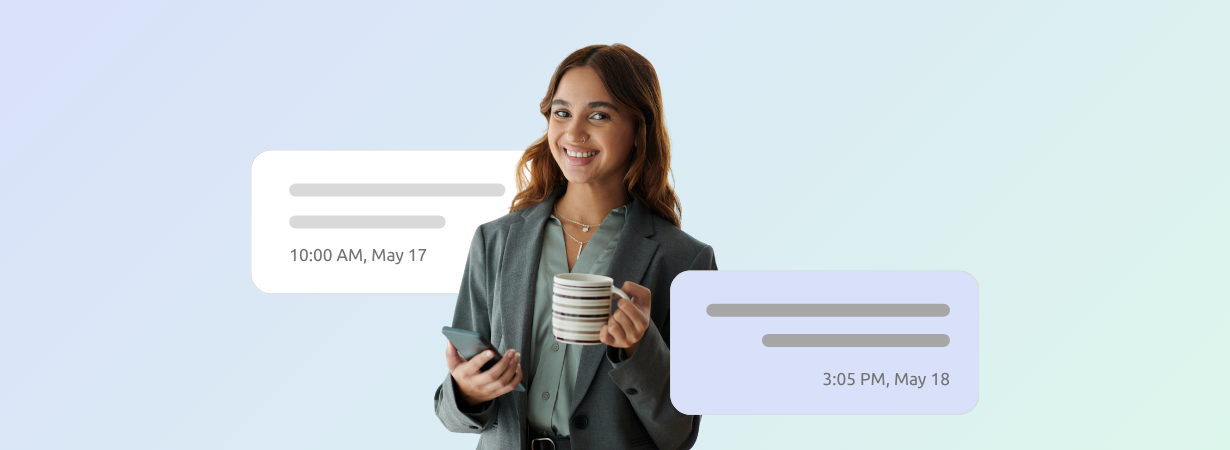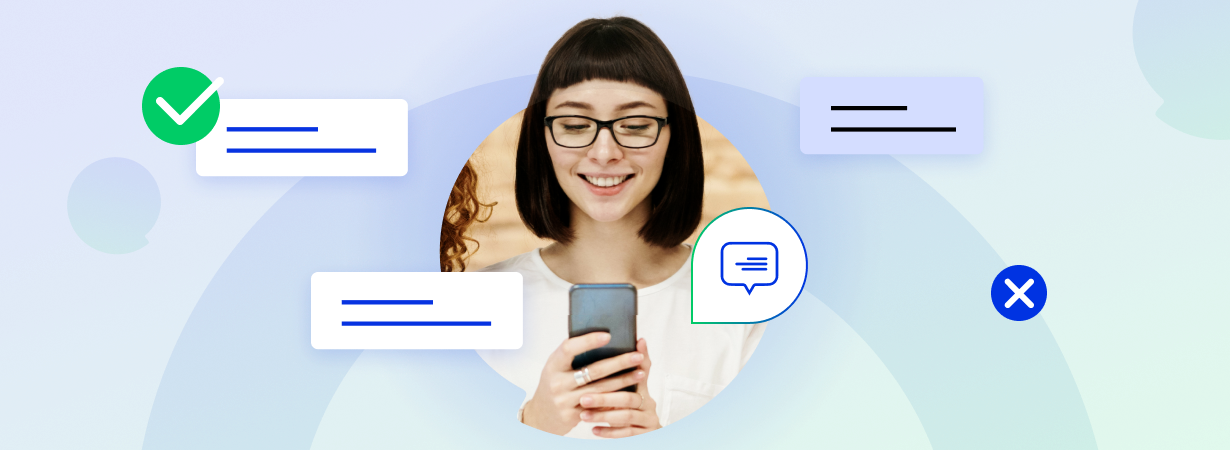Introduction
Let’s say you’re online, and searching for a company’s live chat service. You find what appears to be a live chat box and compose your message – perhaps not even noticing that anything is different. You send your message and wait for a response. That’s when you reread the automated greeting: “Thank you for contacting us! We usually respond in 20 minutes or less.” Or maybe it says: “Hello! In case your message is not responded to right away, leave us your contact number and we’ll get back to you. Our WhatsApp number is *******”
You’re understandably confused – it’s regular business hours after all, and it takes the average company only 48 seconds to respond to a live chat. The thing is, some websites have a live chat-like service that lets you leave a message – only to realize that there’s not actually anyone online ready to serve you.
Live chat for business may be the most well-known, but it isn’t the only internet-based communication platform out there. Before you commit, it’s important that you know which type of chat program is going to be the best live chat for your website. Will it be good old live chat? Or will it be the service that we’ve described to you above – a service that goes by many names, but that we will call live messaging? The following blog post will go over the pros and cons of each web-based chat service, and help you decide which one is right for you.
What is Live Chat?
If you’re reading this blog post, chances are you’ve already done a bit of research on live chat. Live chat is a customer service platform that allows businesses and customers to communicate in real time, from their computers, tablets, or smart phones.
With live chat for business, website visitors can message customer service reps, and customer service reps can also reach out proactively to visitors. Companies that use live chat can set automated chat invitation rules, which allows the system to automatically target and send messages to select visitors, who are most likely to become leads.
For example, you can introduce a rule that allows you to automatically send a proactive message to customers who have spent more than 5 minutes on the checkout page, or to customers who have more than $100 of merchandise in their shopping carts, in order to help you reduce shopping cart abandonment. Since research shows that the average documented online shopping cart abandonment rate is about 70%, this has been an important feature for many companies who introduce a live chat customer service channel to their business.
Many live chat providers also include reports and analytics, such as website traffic monitoring. Information such as which pages your visitors are browsing, what country or city your visitors are accessing you from, and how your visitors found you can help you better know your customers, and can be useful for fine-tuning marketing and social media strategies.
Arguably the most important feature of live chat is its speed and convenience. While some customers might spend upwards of 30 or even 60 minutes on hold on the phone, customers who reach out to a company via live are usually attended in less than a minute. When there is an element of urgency at stake, live chat is the way to go.
Recommended for you: The 7 Best AI Live Chat Software for the Most Common Customer Support Use Cases
What is Live Messaging?
Like live chat, live messaging (also known as IM-based messaging) is a customer service platform that allows customers to chat with a representative online. However, the key difference between these two chat programs is that conversations had over live messaging are not always done in real-time.
Instead, this messaging platform is made to more closely resemble a Facebook, WhatsApp, or iMessage exchange. The customer sends the message, and representative responds: perhaps right away, perhaps in 15 minutes, or perhaps in a few hours.
This setup intentionally mimics a conversation that a customer might have with their family or friends: there is no guarantee of exactly when they might receive a response – all they know is that it should come eventually. That’s why if you value immediacy or want to have an issue solved right away, then this channel may not be for you. Instead, live messaging values flexibility, and the ability of both the customer and the representative to let go of and restart a conversation throughout the day.
What to Consider When Choosing
When choosing a chat program, be sure to take the following considerations into account:
-
Customer Expectations
Whatever chat program you choose to instate will be for your customers. To win new customers and maintain a loyal base, you must ensure your customers’ unwavering satisfaction. And to do that, your chat service will need to be able to meet and surpass your customers’ expectations.
This is only becoming more important with time. Research shows that by 2020, customer service is projected to overtake price and product quality as the leading brand differentiator.
But every customer is different – how can you possibly know your customers’ number one expectation? Do they long for the flexibility of live messaging, or the immediacy of live chat?
Although flexibility is great for many customers, studies have shown that speed trumps everything but quality as customers’ number one priority. If the success of Amazon Prime’s 2-day shipping or Netflix’s instant streaming have taught us anything, it’s just how much customers value immediate service. In fact, these companies have raised the bar so much, that Scot Wingo, Co-Founder of Channel Advisor has dubbed increasing customer expectations the “Amazon Effect”.
Forbes contributor, Stan Phelps, tells us that to offset the Amazon Effect, you must get ahead of the expectations curve. You don’t have to deliver Amazon-level service, but you must know that expectations are increasing and you have to stay one step ahead. Customers are demanding speed, which means that in order to stay competitive you must give them speed.
81% of consumers demand improved response time, not more leniency. Since live chat immediately connects customers with agents, we’re going to call this one a win for live chat.
-
Convenience
When it comes to convenience, both live chat and live messaging go a long way.
Let’s start by looking at how live messaging is convenient. Imagine you’re online, and somewhat distracted. Your issue isn’t immediately pressing, and as you request a chat, you open up a new window and navigate to something else. Ten minutes go by, then you realize that you had forgotten all about your chat session. You navigate back to the window where you were supposed to be chatting, and see that the live chat agent logged off and ended the session about 7 minutes after you didn’t respond to their “Hello!” If you want to try and have your issue resolved, you have to re-initiate the chat now.
IM-based messaging continues a single live chat thread, so you don’t have to worry about accidentally exiting out of the window, or having a representative hang up on you if you don’t respond. For a customer who is doing many things at once, and who can afford to resolve an issue little by little rather than quickly, live messaging can be more convenient.
However, for other customers, it is more convenient to get something out of the way quickly, so that they can move on with their day. This is why most customers don’t like making repeat contact with a business: they don’t want a drawn-out resolution. If that is the case with your customers, then live chat is the better bet.
-
Urgency
For customers who don’t have a sense of urgency with their issue, IM-based messaging can be a good choice. This low-pressure chat platform is based on a respond-when-you-want-to setup that doesn’t rush anybody – your customers or the agents that are helping them.
However, depending on what service your company provides and what your customers are contacting you about, often there is no choice but to get things done quickly. If a customer is contacting your company because they are very upset, they may become even more aggravated if a response is not immediate (a delayed response can plant or grow the belief that the company does not care about them or their needs). In this situation, customers may also attempt to contact your company through multiple channels just to get the quickest response, clogging up queues with the same repeated issue over different channels. Additionally, in the time that your company spends not handling a very upset customer’s issue, that customer may be writing scathing reviews on social media, or spreading the word that your service is unsatisfactory. In a tense customer service situation, particularly distraught customers may react to the situation as though it were life or death.
Sometimes, immediate contact with a company or organization is matter of life or death. Imagine you are on a drug rehabilitation clinic’s website, and need immediate information about a request for internment – information which could save a loved one’s life. Or maybe you have witnessed a crime or suspicious activity, and your local police forces offer live chat to the public as a means of reporting it. Maybe you need urgent medical advice from your healthcare provider for yourself or a family member. All of these scenarios require immediate, urgent assistance. If you in any way deal with situations that involve extreme urgency, you should always offer live chat services over live messaging as a communication channel.
Even when it’s not a matter of life and death, numerous other industries require urgency in customer communications. For example, customers may need to check on things such as flights, last minute package deliveries, same-day appointments, hotel reservations, and other time-sensitive issues that they need to address immediately, not throughout the course of the day.
Sometimes, just being a paying customer is enough to create a sense of urgency. While IM-based messaging provides the same leisurely style of conversation that one might have with a friend or family member, expectations are very different when you are paying for a service, and need to get in touch with a company. Where urgency exists, live chat beats live messaging to the punch every time.
-
Staff Availability
More than half of consumers believe that a business should be available 24/7 (and not just “on,” but engaged and easy to reach). However, not every organization has the resources for a 24/7 live chat service.
With live chat, companies that need to get back in touch with customers the following day can implement an offline chat form that visitors can fill out after hours. Once this form is filled, the company typically follows up, usually via email, the next day.
With live messaging, customers don’t have to worry about switching to email correspondence; their inquiries will be addressed directly in the chat box once business hours resume (this can be a good thing, so long as the customer doesn’t forget to check back!).
On one hand, live messaging can be easier for businesses; companies may not need to have such a large full-time chat team if responses don’t have to be replied to straight away. On the other hand, customers expect companies to conform to meet their schedules, not the other way around. Companies that have the resources to do so should invest in immediate customer service care, so as not to risk the appearance of lazy or outdated customer service.
If you are an enterprise-level organization that is competing with customer service in the style of Amazon, live messaging isn’t enough. Expecting customers to comply with your desired response time just isn’t suitable for 21st century interactions. However, if you have a smaller business with limited staff and a low-pressure influx of messages, then live messaging may be a good option for you.
-
Lead Conversion
44% of online consumers say that having questions answered by a live person during an online purchase is one of the most important features a website can offer. If no one is immediately available to answer a question, a customer may give up and abandon a purchase.
A lead response study of 2,241 US firms by Harvard Business Review (HBR) found that enterprise leads receive slow responses from sales teams. The results revealed that only 37% of companies responded to their leads within an hour. The average lead response time of B2B companies was 42 hours, and 23% companies never responded to their leads.
If you want to make sales and engage with potential customers when they need it, you need to be there in the here and now, with live chat for business. When it comes to better lead conversion, live chat wins every time.
Recommended for you: 6 Effective Ways That You Can Use Live Chat as a Lead Generation Tool
-
Mobile vs Desktop
Depending on what device your customers are accessing your site from, you may find that live chat and live messenger each have some benefits.
Live chat has an advantage on desktop, when customers are sitting down waiting for a response at their computers. Unless customers are distracted by heavy multitasking and are planning at being at their computers for a while, the speed of live chat service tends to be better for desktop users, as opposed to the leisureliness of live messaging.
Customers who are live messaging a company should definitely not strike up a live messaging conversation on the computer if they are planning on leaving their computer for an extended period in the near future. This could result in a heavily drawn out conversation that starts, then stops for hours at a time throughout the day.
Live chat works from mobile devices as well, but it is better for customers who aren’t going to have huge gaps between responses. The live messaging model works well for customers who are contacting your company on the go from mobile devices, or who will be away from the computer for short periods at a time and may not be able to answer a representative right away.
-
An Omnichannel Approach
Live messaging’s approach to customer care is comparable to the way communication works on social messaging platforms. More than a quarter of consumers (26 percent) say they’re open to interacting with a company through a messaging app like Facebook Messenger or WhatsApp. To meet this growing demand, companies are strengthening their presence on social media, and are working to integrate social media customer care into an effective omnichannel approach to customer service.
This raises a simple question: Why pay more for a live messaging provider if customers can already message you in the same style for free, their way?
Live chat is different enough from social media apps that when used in conjunction with them, you will have a dynamic and accommodating customer service strategy. With Facebook Messenger, WhatsApp, and more available on social platforms, and live chat available on your company’s website, you are well on your way to creating an effective omnichannel approach to customer service.
Conclusion
Customers want synchronous communication. While small teams with tighter resources may benefit from the flexibility of live messaging, we recommend live chat for large and enterprise teams.
Ultimately, the drive to provide good customer service is what makes a good business great. It is what will make your business stand out from the crowd. If you want to be a top competitor in your industry and to provide excellent, immediate customer service while retaining market share, live chat is the way to go.
With live chat, you will be able to connect with customers in less than a minute on your own website – a connection that no other platform, free or paid, provides. You’ll be able to keep your current customers fulfilled and even bring in new customers with live chat’s lead generating and converting abilities. And with the access to metrics that are included in live chat programs, you will be able to see what you can improve on as a business, and lead your company into the future.
Interested in seeing how live chat can benefit your business? Start your free 15 day trial with Comm100 today!






